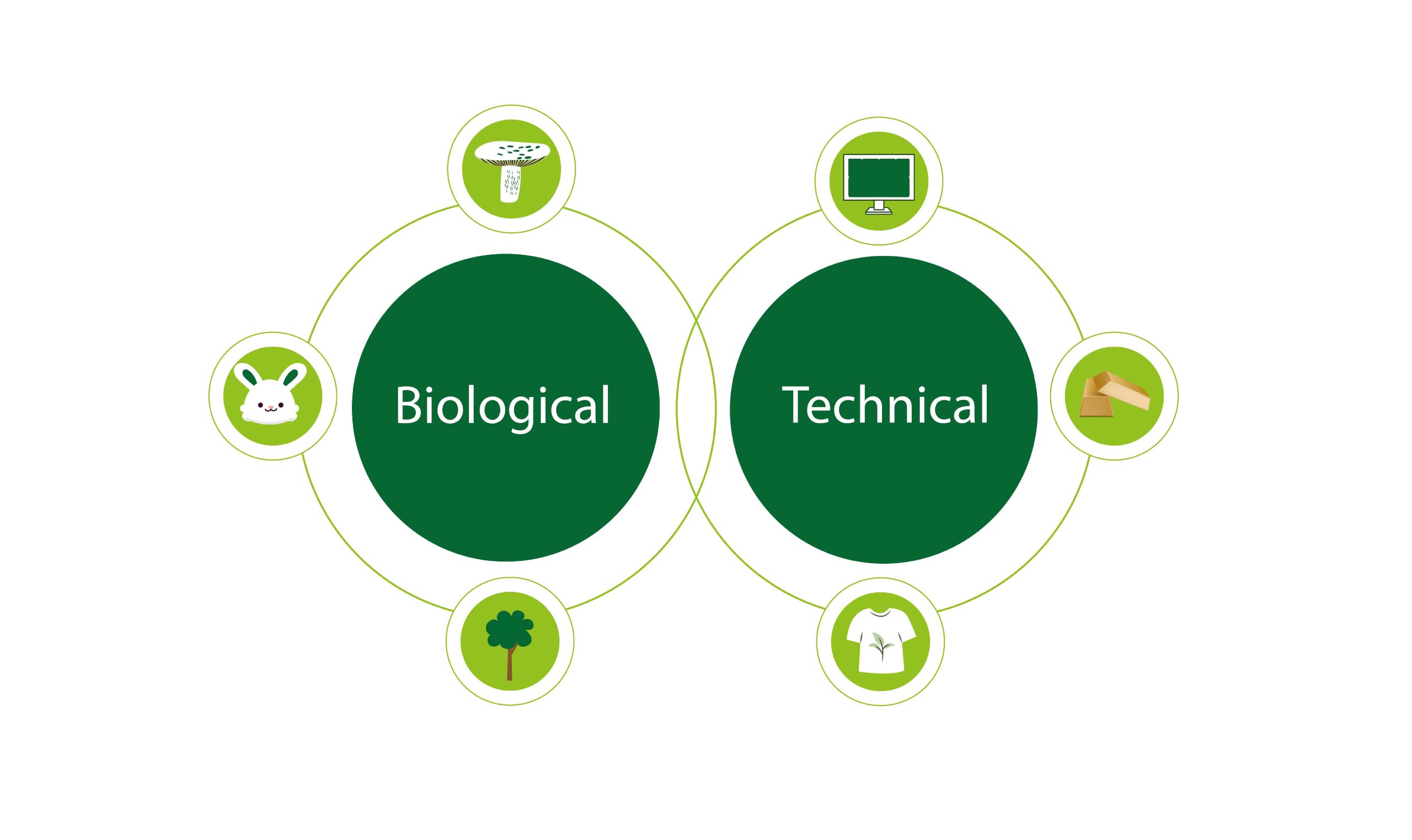
31 Jan Cradle To Cradle
C2C is sustainability on steroids. It’s a fresh way of looking at our world problems very practically and positively; it’s not just looking to solve our natural catastrophes with mitigation and lessening toxicity. All of our industries and products are able to completely feed back into themselves perpetually. It’s the circular economy but spiraling upwards.
Working in the field of conservation can become quite depressing. We watch animals go extinct, we see environments being destroyed by misuse and abuse, and we try to get people who are fighting for their lives to give a hoot about some endangered owl (pun intended). What if our efforts could be directed into a system that would allow human beings and nature to not only live together in harmony but truly thrive together? In a C2C world this is all possible.
In a C2C world, nature is our teacher. Nature doesn’t waste, nature has a use and place for everything. There is no ‘cradle to grave’ model for nutrients, they are continuously reused, everything has a rebirth, this is the cradle to cradle concept. Everything we make can either be classified into a biological nutrient (can be composted) or a technical nutrient (can be continuously reused like metal or plastic). Nature doesn’t worry about its emissions because all of its emissions are GOOD (e.g. plants produce the oxygen we breathe, animals produce carbon dioxide that the plants breathe). In a C2C world we don’t waste, we celebrate diversity, and we improve our world for future generations.
Okay, this all sounds wonderfully idealistic. But how do we practically achieve these lofty goals?

if we are to solve the problems that plague us our thinking must evolve beyond the level we were using when we created those problems in the first place.’
Here are some things we can do:
- Turn away from products and designs that are known to be harmful.
- Make informed choices, do your best with options available. Find suppliers who are conscious and products with as few additive chemicals (esp. stabilizers, antioxidants, antibacterials substances) as possible.
- Determine list of contents in products: x-list: harmful; gray list: problematic substances which if recaptured properly could be ok; p-list: positives, healthy and safe for use. When categorized, the product can then be redesigned by substituting contents.
- Activating the p-list. Redesigning with all the principles from new ingredients that can all feed back into the biological and technical cycles.
- Reinvent. Instead of ‘design a car’ we ‘design a nutrivehicle’, releasing positive emissions for example. Designs are geared to fulfill human needs while continuously evolving in a technical and cultural context; all the while keeping future generations in mind.
Do you want to grow vegetables? Find a way to do it organically. Better yet, research permaculture and other regenerative agricultural methods like no-till farming. Restoring our top.
soil alone could single-handedly combat climate change. And then make your choices known, in a positive way. The trend will build. Do you wish you could buy clothes that were made without the extravagant use of water, or without using hundreds of toxic chemicals, and that weren’t made in a sweatshop? There are many ways you can be responsible for the betterment of our planet! Make thoughtful and informed choices about everything you buy and everything you create. Everything is connected in this world. Butterfly effects of small choices can affect large changes in cascading reactions. Plant a tree, plant a forest, restore lost grass habitat on your roof, switch to solar, and never stop thinking outside the box. We are a gifted species with the power to create, in the likeness of the Almighty, let’s get creative! This home we have been given was ours to take care of, are we being responsible house sitters? Share this information with your loved ones. Let’s try and leave this world better than we found it.

No Comments